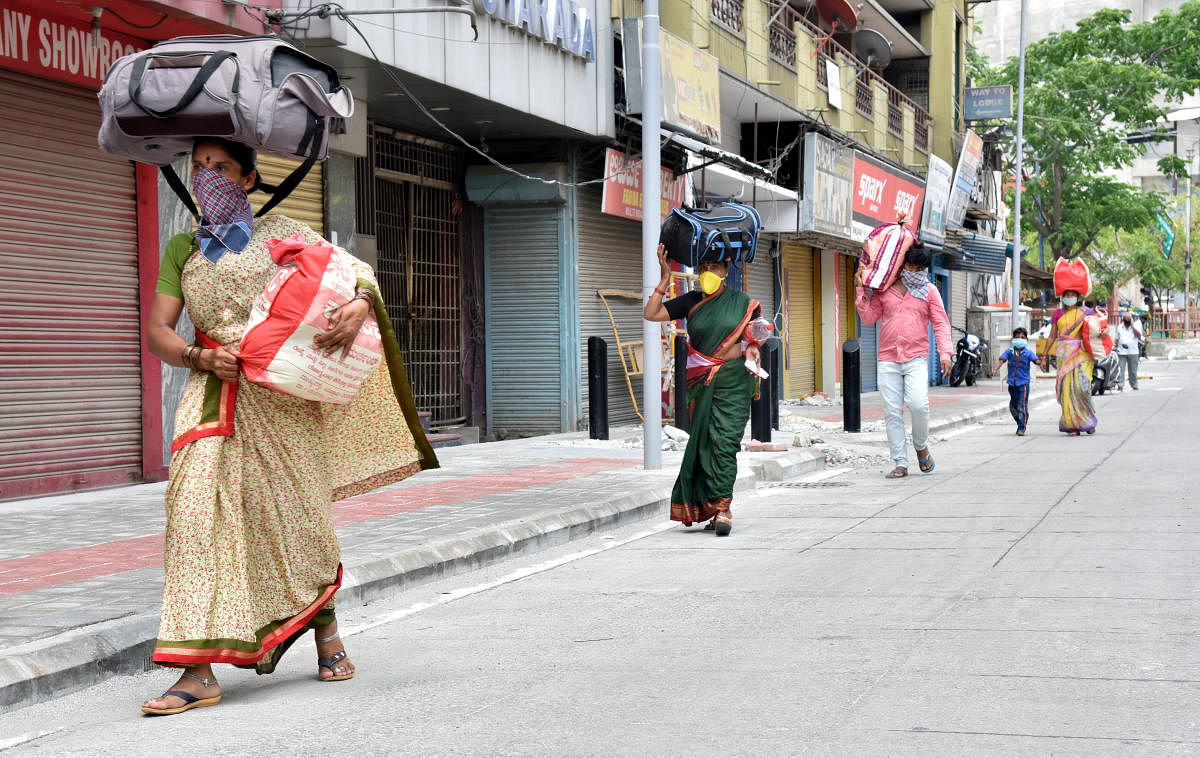
The year 2020 began on a sad note for the world. Covid-19, the pandemic, has engulfed almost all the countries with over 33.59 lakh cases and 2,38,000 deaths as of the evening of May 2. India is not spared, but compared to many other countries, the pandemic is under control here.
The spread of the virus was contained with lockdown of almost all the activities throughout the country. With this lockdown, many things have changed, especially, in big cities. Coming to Bengaluru, it seems like the city of the 1970s when air used to be fresher, road traffic lighter, low noise pollution and no frothing lakes. Air pollution is at a 20-year low in all major cities. Considering the fact that the top 15 of the 20 most polluted cities in the world are in India, this change is indicating that the unplanned expansion of cities needs a relook now.
The harsher side of the lockdown was that all the industries were shut down leading to millions of migrants being out of jobs and stranded in big cities. Once the lockdown is eased, many the migrant labourers would like to go back home and the governments, both at the Centre and the states should plan for it.
Solution to the situation should include facilitating people to stay back in their hometowns if they wish and also providing livelihood to the people wherever they wish to live. How can bothgoalsoptionsbe achieved?
All the businesses in cities, except the essential services, have been shut down for over six weeks. Many of these businesses may not start their operations immediately post-lockdown for operational as well as financial reasons.
The migrant workers play a major role in cost-effective running of many of these businesses, be it construction, security, cab providers and many such where manpower is central. With many of these workers going home, the businesses may not be able to restart for some more time, even after the lockdown is lifted.
This situation is like rebooting cities, starting afresh. Now is the time to stop the haphazard urban growth, which lacks the infrastructure to cater for large populations. Hence, the government and the businesses have to come together, get creative and rethink on how to effectively start their businesses as well as to reap the environmental benefits of the lockdown.
One way out would be some of the businesses can be relocated in smaller towns or rural areas. For example, food processing or garment industries or machining/lathe works or call centres or similar businesses that do not require highly skilled work force can be relocated. This strategy has many advantages such as:
Providing jobs to the rural and small town youth in their neighbourhood.They do not have to leave their families to live in small, crowded houses paying exorbitant rents. This will help the reluctant urbanisers enjoy their own surroundings in addition to earning a livelihood.
Availability of labour for agricultural activities, that too during peak season.
Automatically improving the infrastructure in these places. If some training centres are set-up to impart the required skill sets in rural areas, many industries will benefit.
If these policy changes are implemented, it will make rural areas self-sufficient and vibrant.
In addition to enhancing the lives of rural populations, this strategy will help improve the cities by decongesting them. Most importantly, stress on infrastructure expansion in cities will come down with less population. For example, in Bengaluru, the roads are not designed for the use of over 77 lakh vehicles.
Pollution levels
The pollution levels in the city, especially PM2.5, are higher than the national guidelines. With fewer people in the city, traffic woes will come down, bringing down pollution. Bengaluru is not on any riverfront and all the water used in the city is pumped uphill all the way from KRS or Kabini near Mysuru. About 4,700 crore litres of water is pumped into the city every month, consuming 7,35,000 units of electricity at acost of Rs 46 crore.
Moving some select industries to rural areas and smaller cities will have the following benefits:
Financial benefits for industries as the land prices, rents and labour in these places would be lower than in bigger cities.
For the youth of the local community, life would become simpler as they would be staying with their families and not incur heavy expenditure of city living.
The youth can also participate in agricultural activities during sowing and harvesting seasons which would provide additional income.
Overcrowding in big cities will reduce drastically making these cities liveable.
It is like a starting point for activities all over the country. The central and state governments in collaboration with small-scale industries and planning experts have to come up with suitable solutions so that large-scale migration from hometowns is reduced and the people have their livelihood in the vicinity of their hometowns. It will be a win-win situation for industries as well as people.
(The writer is with Energy and Environment Research Programme, NIAS, Bengaluru)